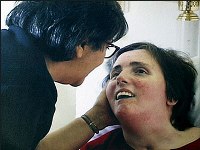Science Daily — Vanderbilt University Medical Center is the first in the state to perform a novel therapy that uses bone marrow stem cells to stimulate regeneration of the heart muscle after a heart attack.
Vanderbilt is one of three medical centers in the country providing this new treatment modality as part of a multi-center, randomized study funded by Amorcyte, a privately funded cell-therapy company studying stem cells for the treatment of cardiovascular disease.
Physicians are excited about the prospects of this therapy because of the enormous potential to “transform the way we treat people with cardiac disease,” said Douglas Vaughan, M.D., chief of the Division of Cardiovascular Medicine. “This is the first patient of many that we will enroll in our randomized-controlled trials to study the effects of cell therapy in treating cardiac disease.
“It is truly gratifying that we have reached this point.”
John Plummer, 63, underwent the stem cell regeneration therapy on March 11, about one week after experiencing a heart attack.
“There are no guarantees,” said Plummer. “It was the prospect of improvement — any improvement — that made it worth it. There are certain risks, but the prospect of the study proving to be valuable to others as well, all of those considerations made it seem like something I ought to do.
“I look at it this way. This is an improvement you would give almost anything to make. There is nothing more important than your general health.”
Plummer, an English professor for 36 years at Vanderbilt University, is not the first patient tested for eligibility into the trial. More than 100 patients have been screened, but did not meet the criteria for study participation – impaired heart function after an acute heart attack.
“If we treat a patient rapidly, some may not have any damage at all,” said David Zhao, M.D., director of the Cardiac Cath Lab. “But for those who, despite all efforts, suffer damage to the heart muscle, we are studying the effects of this treatment in repairing the heart muscle.
“We are hoping that this is just the beginning of the journey and eventually we will be able to provide this unique therapy as part of our treatment protocol to patients with a damaged heart.”
For decades, the major barrier in treating heart attack patients is the inability to repair the damaged muscle. About 20 percent of patients experience permanent muscle loss, which ultimately leads to heart failure. Heart disease is the leading cause of death in the United States. Five million people suffer from heart failure. Half of those die.
“If you look at the big picture, we don’t have a definitive way to improve people’s heart function, “said Scott Phillips, M.D., a cardiology fellow. “Heart failure has a huge financial impact on our medical system. If we could improve heart function, if this proves to be a viable therapy, there would be tremendous benefits, not only for the patient, but in terms of the amount of money a health care system could save. It would be astronomical.”
WHAT?! This could lead to financial benefits as well?? I thought that only came with cloning and ESC research!
This is also a statement you usually only hear associated with embryo destructive stem cell research.
 What else is happening on March 25? It is the International Day of the Unborn Child. Vote Life, Canada has made this graphic and the Big Blue Wave has this message for all bloggers:
What else is happening on March 25? It is the International Day of the Unborn Child. Vote Life, Canada has made this graphic and the Big Blue Wave has this message for all bloggers: